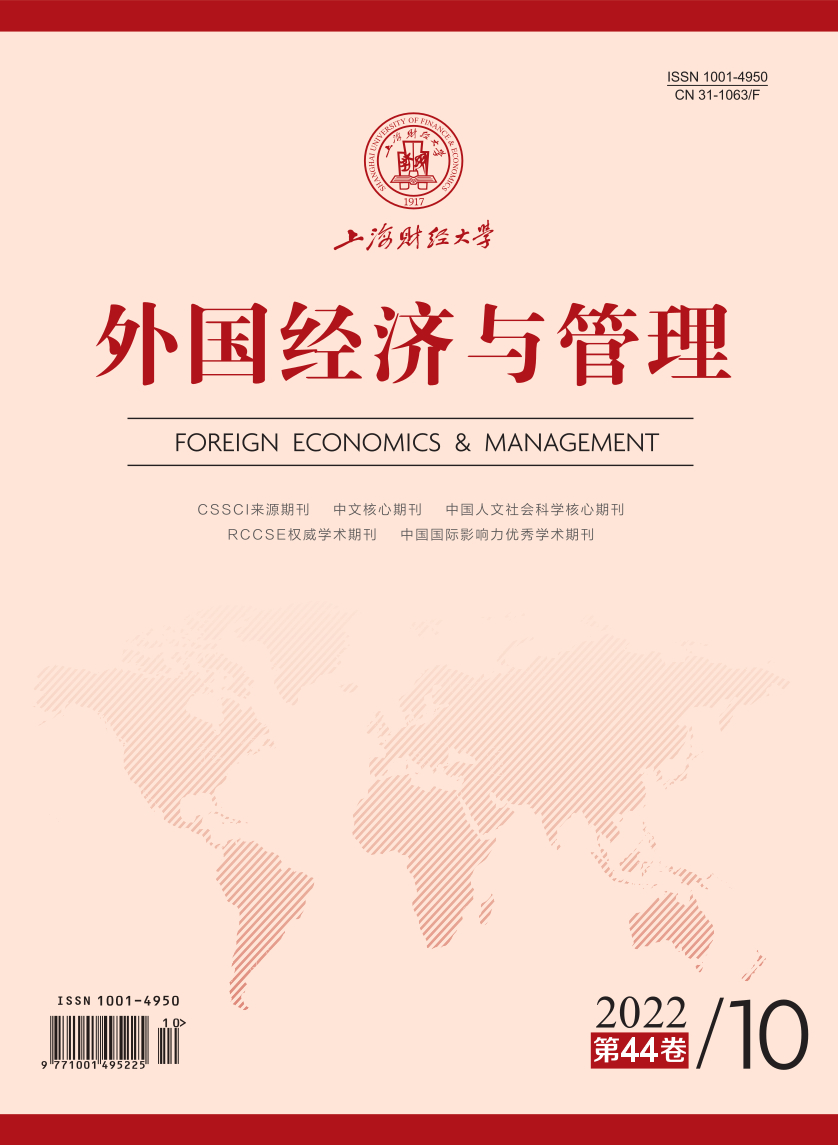如何缓解在线零售中的触觉障碍所导致的消费者负面后果是电子商务领域共识性的难题,如何通过非接触性媒介以文本描述的方式为消费者补偿抽象复杂的产品感官属性信息仍未得到较好的解决。本文通过两项情境模拟实验和一项真实田野实验研究发现,在线产品隐喻文本描述可以有效地向消费者传递产品触觉属性信息,动态隐喻文本描述相较于静态隐喻文本描述能让消费者产生更高的购买意愿;触觉意象在在线产品描述方式影响消费者购买意愿的过程中发挥中介作用;产品类型发挥调节作用,触觉体验型产品采用在线动态隐喻文本描述能导致消费者更高的购买意愿,触觉功能型产品采用在线静态隐喻文本描述能导致消费者更高的购买意愿,并且触觉意象在这两种情境下均发挥中介作用。本研究不仅丰富了感官知觉域经验语言表达策略的理论研究,同时也为在线零售企业提高在线产品展示的有效性以及实施在线感官营销策略等提供了管理启示。
触不可及还能感同身受吗?——在线产品隐喻文本描述的触觉补偿效应研究
摘要
参考文献
7 Abaidi I, Agrebi S, Ben Nasr I, et al. Mental imagery: A lever for valuing an intangible offer[J]. Recherche et Applications en Marketing (English Edition),2020, 35(3): 79-101. DOI:10.1177/2051570720954312
8 Andrade J, May J, Deeprose C, et al. Assessing vividness of mental imagery: The plymouth sensory imagery questionnaire[J]. British Journal of Psychology,2014, 105(4): 547-563. DOI:10.1111/bjop.12050
9 Balaji M S, Raghavan S, Jha S. Role of tactile and visual inputs in product evaluation: A multisensory perspective[J]. Asia Pacific Journal of Marketing and Logistics,2011, 23(4): 513-530. DOI:10.1108/13555851111165066
10 Barsalou L W. Grounded cognition[J]. Annual Review of Psychology,2008, 59: 617-645. DOI:10.1146/annurev.psych.59.103006.093639
11 Berger C C, Ehrsson H H. The fusion of mental imagery and sensation in the temporal association cortex[J]. The Journal of Neuroscience,2014, 34(41): 13684-13692. DOI:10.1523/JNEUROSCI.0943-14.2014
12 Bettiga D, Bianchi A M, Lamberti L, et al. Consumers emotional responses to functional and hedonic products: A neuroscience research[J]. Frontiers in Psychology,2020, 11: 559779. DOI:10.3389/fpsyg.2020.559779
13 Bianchi I, Branchini E, Torquati S, et al. Non experts’ understanding of terms frequently used by experts to describe the sensory properties of wine: An investigation based on opposites[J]. Food Quality and Preference,2021, 92: 104215. DOI:10.1016/j.foodqual.2021.104215
14 Choi N H, Qiao X X, Wang L. Effects of multisensory cues, self-enhancing imagery and self-goal-achievement emotion on purchase intention[J]. The Journal of Asian Finance, Economics and Business,2020, 7(1): 141-151. DOI:10.13106/jafeb.2020.vol7.no1.141
15 Di F, Kaboli M, Cheng G. Active prior tactile knowledge transfer for learning tactual properties of new objects[J]. Sensors,2018, 18(2): 634-652. DOI:10.3390/s18020634
16 Duarte P, Silva S C. Need-for-touch and online purchase propensity: A comparative study of Portuguese and Chinese consumers[J]. Journal of Retailing and Consumer Services,2020, 55: 102122. DOI:10.1016/j.jretconser.2020.102122
17 Feng Y, Zhou R. Does embodiment of verbs influence predicate metaphor processing in a second language? Evidence from picture priming[J]. Frontiers in Psychology,2021, 12: 759175. DOI:10.3389/fpsyg.2021.759175
18 Forgács B. The pragmatic functions of metaphorical language[A]. Gervain J, Csibra G, Kovács K, eds. A life in cognition[M]. Cham: Springer, 2022.
19 Gentner D, Smith L A. Analogical learning and reasoning[A]. Reisberg D. The Oxford handbook of cognitive psychology[M]. New York: Oxford University Press, 2013.
20 Hartman J, Paradis C. Emotive and sensory simulation through comparative construal[J]. Metaphor and Symbol,2018, 33(2): 123-143. DOI:10.1080/10926488.2018.1434945
21 Hartman J, Paradis C. Figurative meaning in multimodal work by an autistic artist: A cognitive semantic approach[J]. Language and Cognition,2021, 13(1): 1-33. DOI:10.1017/langcog.2020.20
22 Hayes A F. Introduction to mediation, moderation, and conditional process analysis: A regression-based approach[M]. New York: Guilford Press, 2013.
23 Jang S Y, Ha J. The influence of tactile information on the human evaluation of tactile properties[J]. Fashion and Textiles,2021, 8(1): 39. DOI:10.1186/s40691-020-00242-5
24 Jha S, Balaji M S, Peck J, et al. The effects of environmental haptic cues on consumer perceptions of retailer warmth and competence[J]. Journal of Retailing,2020, 96(4): 590-605. DOI:10.1016/j.jretai.2020.04.003
25 Karangi S W, Lowe B. Haptics and brands: The effect of touch on product evaluation of branded products[J]. Journal of Consumer Behaviour,2021, 20(6): 1480-1496. DOI:10.1002/cb.1959
27 Kövecses Z. An extended view of conceptual metaphor theory[J]. Review of Cognitive Linguistics,2020, 18(1): 112-130. DOI:10.1075/rcl.00053.kov
28 Kühn F, Lichters M, Krey N. The touchy issue of produce: Need for touch in online grocery retailing[J]. Journal of Business Research,2020, 117: 244-255. DOI:10.1016/j.jbusres.2020.05.017
29 Luangrath A W, Peck J, Hedgcock W, et al. Observing product touch: The vicarious haptic effect in digital marketing and virtual reality[J]. Journal of Marketing Research,2022, 59(2): 306-326. DOI:10.1177/00222437211059540
30 Lv X Y, Li H F, Xia L. Effects of haptic cues on consumers’ online hotel booking decisions: The mediating role of mental imagery[J]. Tourism Management,2020, 77: 104025. DOI:10.1016/j.tourman.2019.104025
31 Maciel I M, Felicio G, Da Silva E T, et al. Mental imagery for multisensory designers: Insights for non-visual design cognition[A]. International conference on research into design[C]. Singapore: Springer, 2021.
32 Mulcahy R F, Riedel A S. “Touch it, swipe it, shake it”: Does the emergence of haptic touch in mobile retailing advertising improve its effectiveness?[J]. Journal of Retailing and Consumer Services,2020, 54: 101613. DOI:10.1016/j.jretconser.2018.05.011
33 Overmars S, Poels K. How product representation shapes virtual experiences and re-patronage intentions: The role of mental imagery processing and experiential value[J]. The International Review of Retail, Distribution and Consumer Research,2015, 25(3): 236-259. DOI:10.1080/09593969.2014.988279
34 Paradis C. Ontologies and construals in lexical semantics[J]. Axiomathes,2005, 15(4): 541-573. DOI:10.1007/s10516-004-7680-7
35 Paradis C, Eeg-Olofsson M. Describing sensory experience: The genre of wine reviews[J]. Metaphor and Symbol,2013, 28(1): 22-40. DOI:10.1080/10926488.2013.742838
37 Rodrigues T, Silva S C, Duarte P. The value of textual haptic information in online clothing shopping[J]. Journal of Fashion Marketing and Management,2017, 21(1): 88-102. DOI:10.1108/JFMM-02-2016-0018
38 Rossi M G, Macagno F. The communicative functions of metaphors between explanation and persuasion[A]. Macagno F, Capone A. Inquiries in philosophical pragmatics[M]. Cham: Springer, 2021.
39 Silva S C, Rocha T V, De Cicco R, et al. Need for touch and haptic imagery: An investigation in online fashion shopping[J]. Journal of Retailing and Consumer Services,2021, 59: 102378. DOI:10.1016/j.jretconser.2020.102378
40 Sung J Y. The perceived lexical space for haptic adjective based on visual texture aroused from need for touch[J]. Design Convergence Study,2013, 12(1): 117-128.
41 Tan L. Human action pattern recognition and semantic research based on embodied cognition theory[J]. International Journal of Pattern Recognition and Artificial Intelligence,2020, 34(5): 2055013. DOI:10.1142/S0218001420550137
42 To R N, Patrick V M. How the eyes connect to the heart: The influence of eye gaze direction on advertising effectiveness[J]. Journal of Consumer Research,2021, 48(1): 123-146. DOI:10.1093/jcr/ucaa063
43 Van Mulken M, Van Hooft A, Nederstigt U. Finding the tipping point: Visual metaphor and conceptual complexity in advertising[J]. Journal of Advertising,2014, 43(4): 333-343. DOI:10.1080/00913367.2014.920283
44 Yim M Y C, Kim Y K, Lee J. How to easily facilitate consumers’ mental simulation through advertising: The effectiveness of self-referencing image dynamics on purchase intention[J]. International Journal of Advertising,2021, 40(5): 810-834. DOI:10.1080/02650487.2020.1801014
45 Yoo J, Kim M. The effects of online product presentation on consumer responses: A mental imagery perspective[J]. Journal of Business Research,2014, 67(11): 2464-2472. DOI:10.1016/j.jbusres.2014.03.006
引用本文
冷雄辉, 周小榆, 熊立. 触不可及还能感同身受吗?——在线产品隐喻文本描述的触觉补偿效应研究[J]. 外国经济与管理, 2022, 44(10): 87-103.
导出参考文献,格式为:
下一篇:企业数字技术应用与创新效率提升





 4953
4953  5411
5411

